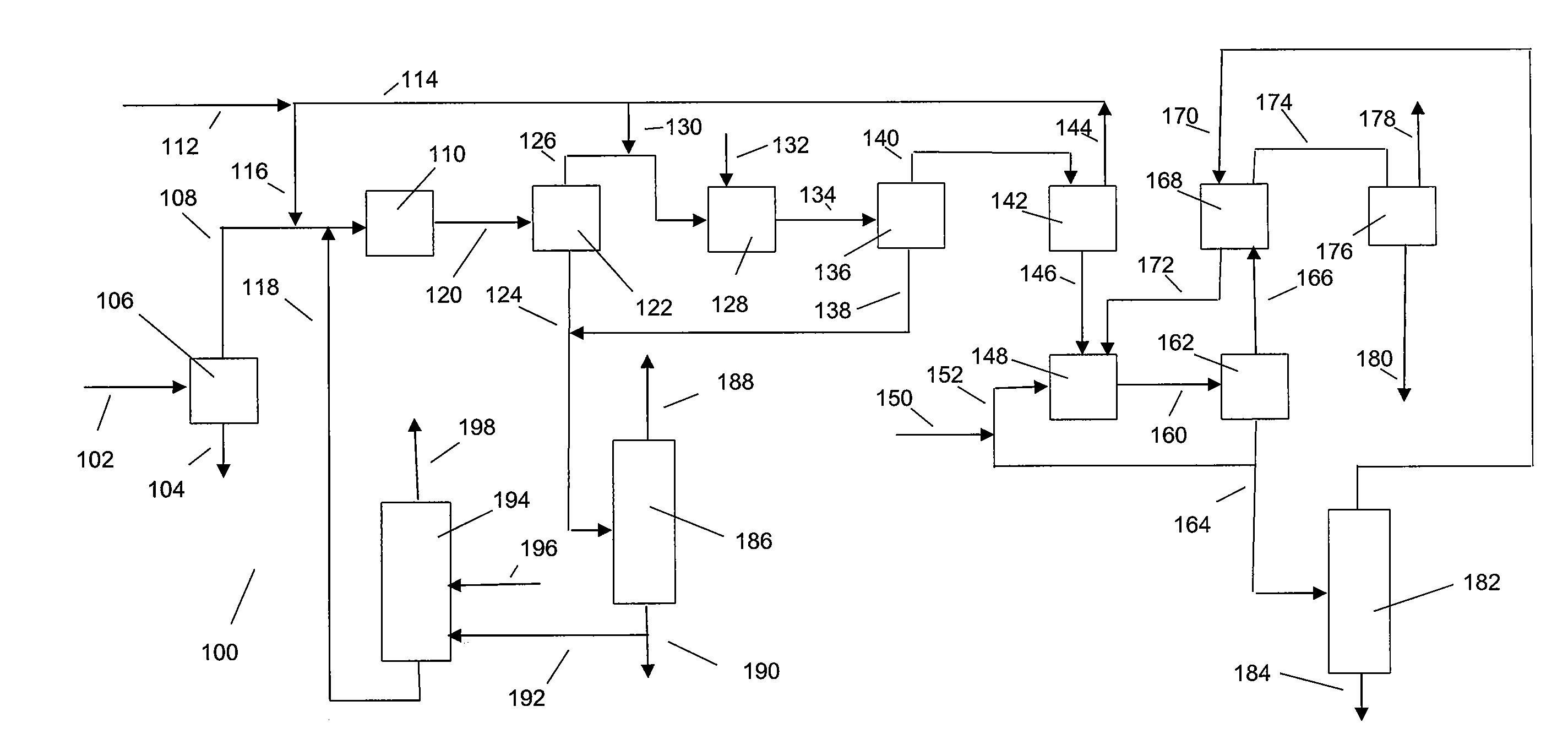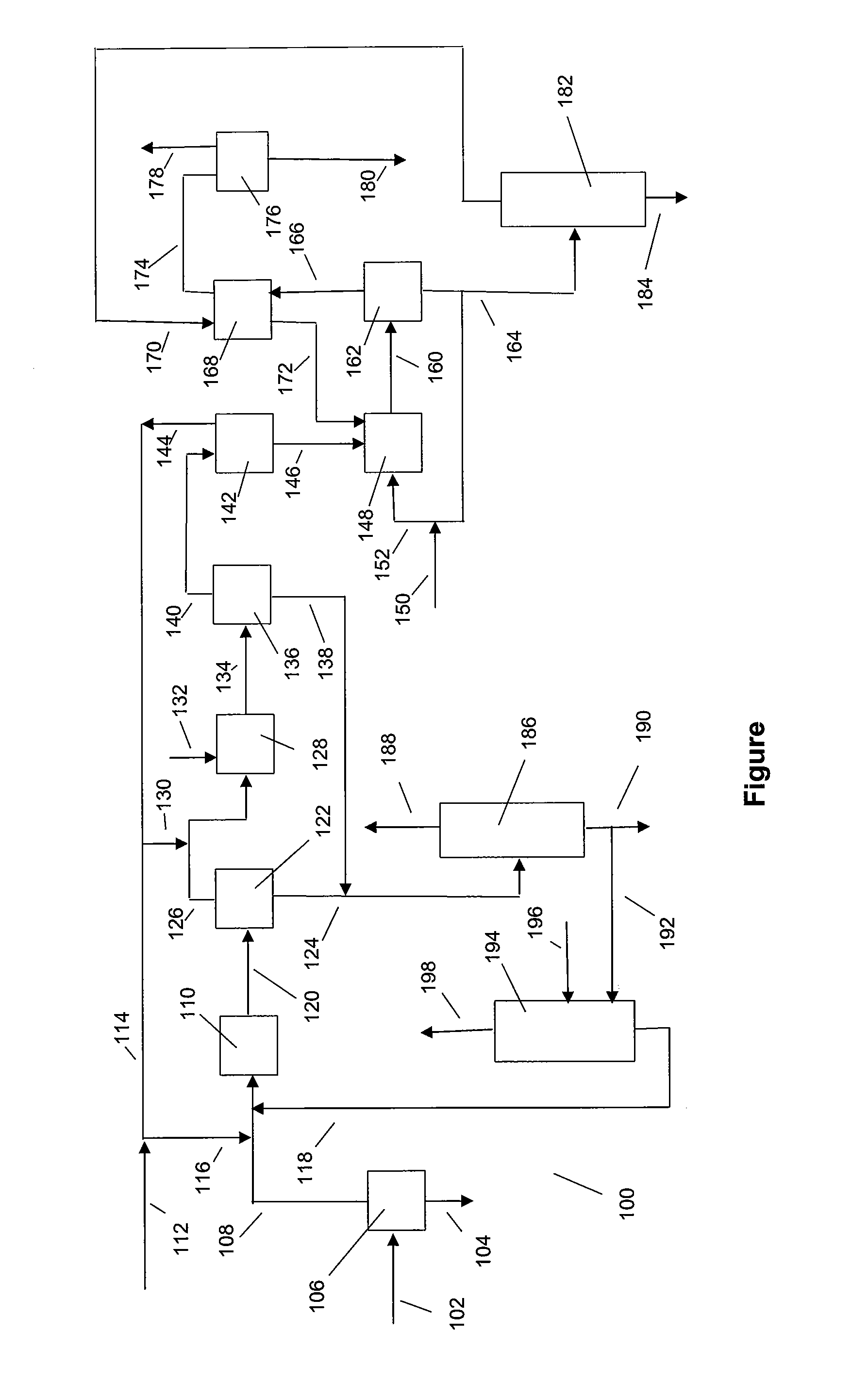Biodiesel process and catalyst therefor
a biodiesel and catalyst technology, applied in the direction of physical/chemical process catalysts, organic compound/hydride/coordination complex catalysts, organic chemistry, etc., can solve the problems of higher cost of such anhydrous catalysts, catalyst loss, and loss of yield, and achieve low water content and easy removal of water.
- Summary
- Abstract
- Description
- Claims
- Application Information
AI Technical Summary
Benefits of technology
Problems solved by technology
Method used
Image
Examples
Embodiment Construction
The Catalyst
[0018]The transesterification catalyst or catalyst precursor of this invention comprises a basic metal salt of glycerin. The glycerin salt may be used as the catalyst or may be further reacted with lower alkanol to provide a basic metal alkoxide. The basic metal alkoxide may be recovered or used as a mixture containing the basic metal alkoxide and glycerin. The reaction with lower alkanol may be prior to introduction into the transesterification zone or may occur in whole or part in the transesterification zone.
[0019]The basic metal salt of glycerin may be made in any convenient manner. Usually the salt is prepared by reacting glycerin with one or more of reactive basic metal compounds such as oxides, hydroxides, bicarbonates or carbonates. Basic metals include alkali and alkaline earth metals such as sodium, potassium, lithium, cesium, barium, calcium and strontium. Due to availability and cost, sodium, potassium and calcium are the preferred basic metals. The reactive ...
PUM
| Property | Measurement | Unit |
|---|---|---|
| temperatures | aaaaa | aaaaa |
| temperatures | aaaaa | aaaaa |
| pressure | aaaaa | aaaaa |
Abstract
Description
Claims
Application Information
 Login to View More
Login to View More - R&D
- Intellectual Property
- Life Sciences
- Materials
- Tech Scout
- Unparalleled Data Quality
- Higher Quality Content
- 60% Fewer Hallucinations
Browse by: Latest US Patents, China's latest patents, Technical Efficacy Thesaurus, Application Domain, Technology Topic, Popular Technical Reports.
© 2025 PatSnap. All rights reserved.Legal|Privacy policy|Modern Slavery Act Transparency Statement|Sitemap|About US| Contact US: help@patsnap.com


